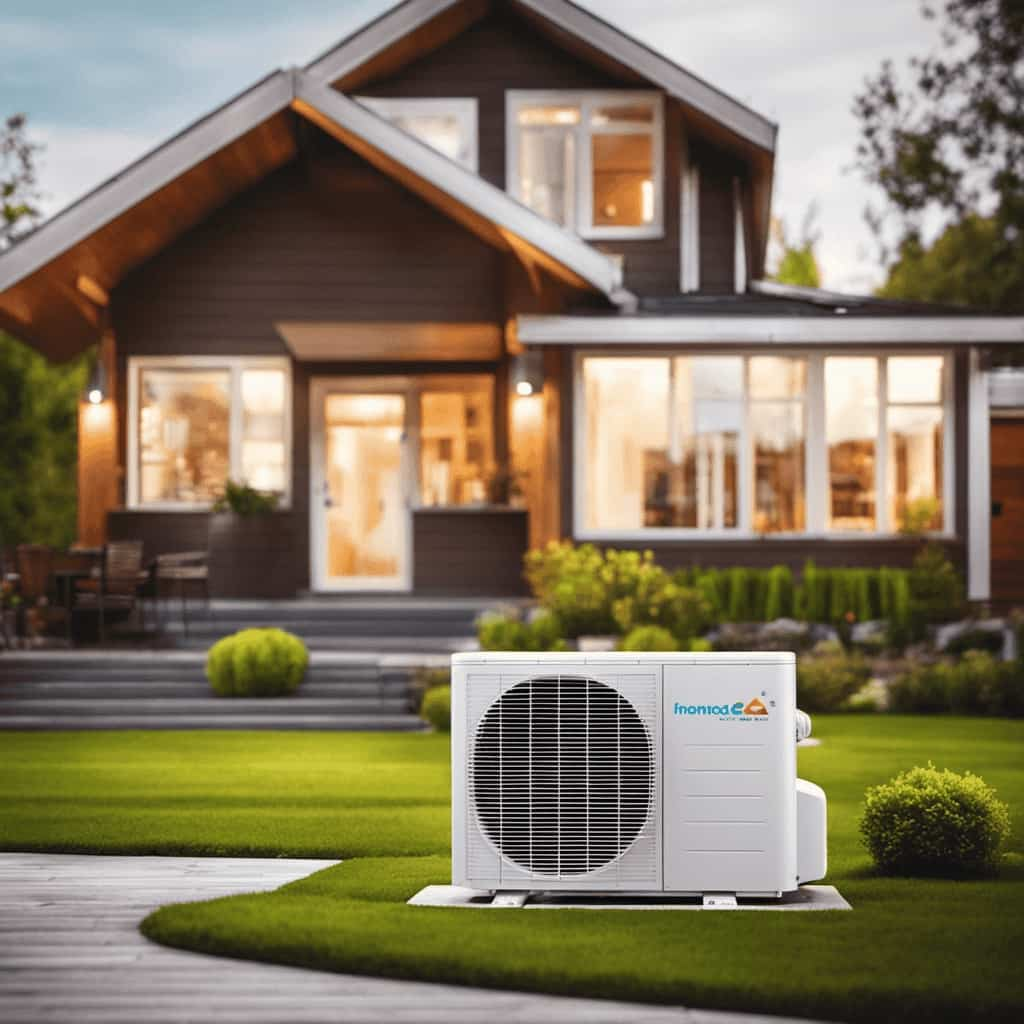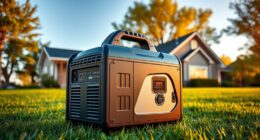If you want to take control of your surroundings while saving energy, look no further. Our detailed guide will walk you through everything you need to know about using energy-efficient heat pumps.
These powerful devices can keep your home cool in the summer and warm in the winter, all while minimizing your environmental impact.
So let’s dive in and learn how to maximize comfort and savings with heat pumps!
Key Takeaways
- Heat pumps are highly efficient and can both heat and cool spaces.
- Energy-efficient heat pumps use less electricity, have a longer lifespan, and produce fewer greenhouse gas emissions.
- When choosing a heat pump, consider factors such as size, efficiency, cost, and compatibility with your existing HVAC system.
- Operating and maintaining heat pumps properly, including adjusting temperature settings, regular maintenance, and proper insulation, is essential for optimal performance and energy savings.
Understanding Heat Pumps: A Primer
Before we dive into the details of climate control with energy-efficient heat pumps, let’s start by understanding the basics of how heat pumps work.
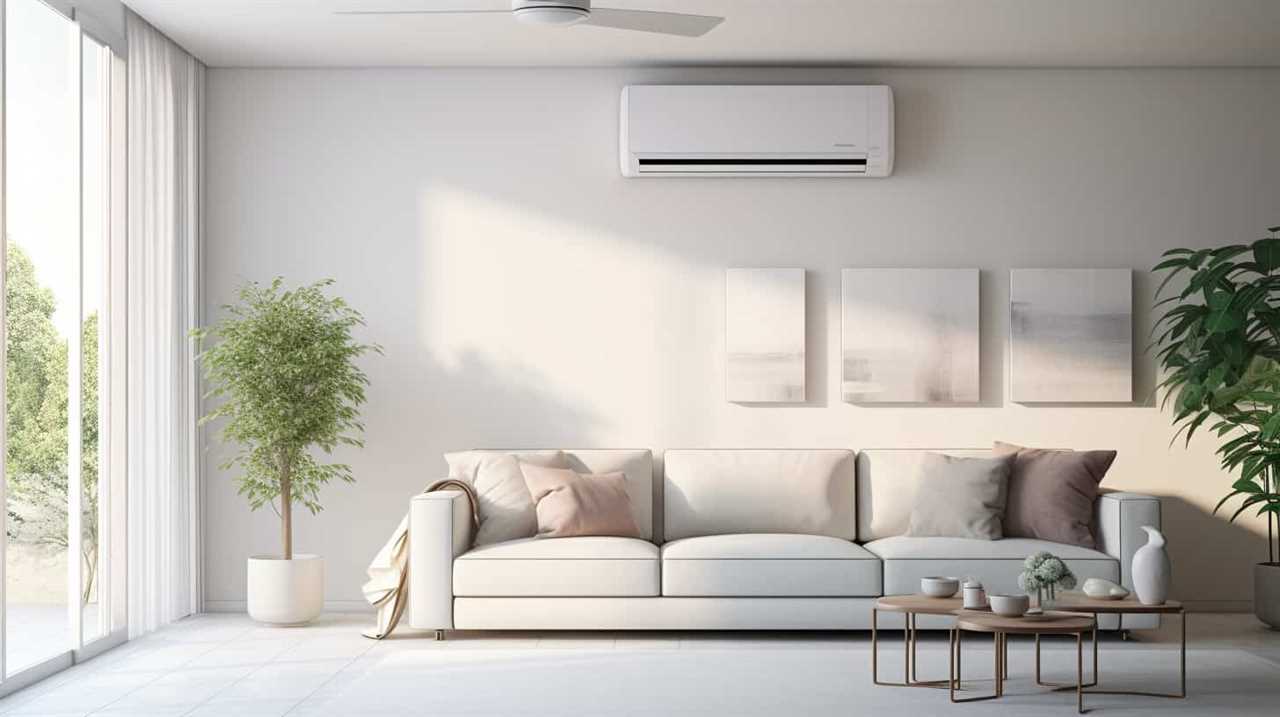
Heat pump technology is based on the principle of transferring heat from one place to another using refrigerant. Unlike traditional heating systems, heat pumps can both heat and cool spaces by extracting heat from the air, ground, or water source and transferring it to the desired area.
This process is highly efficient, as heat pumps can produce more heat energy than the electrical energy they consume. Heat pump efficiency is measured by the Coefficient of Performance (COP), which compares the amount of heat produced to the amount of electrical energy used. The higher the COP, the more efficient the heat pump is at converting energy into heat.
The Benefits of Energy-Efficient Heat Pumps
One of the benefits of energy-efficient heat pumps is their ability to provide both heating and cooling functions. These systems are designed to transfer heat from one location to another, making them highly efficient in maintaining a comfortable indoor temperature throughout the year.
Energy-efficient heat pumps use less electricity compared to traditional heating and cooling systems, resulting in lower energy bills. They also have a longer lifespan and require less maintenance, saving homeowners time and money in the long run.

Additionally, these heat pumps are environmentally friendly, as they produce fewer greenhouse gas emissions. The advantages of energy-efficient heat pumps go beyond just cost savings; they also contribute to a healthier and more sustainable environment.
Now let’s explore how to choose the right heat pump for your home.
Choosing the Right Heat Pump for Your Home
When choosing the right heat pump for your home, there are several important factors to consider.
First, you need to determine the size and efficiency of the heat pump that will best suit your needs. This involves evaluating the size of your home and its heating and cooling requirements.

Additionally, you should take into account the cost of the heat pump and the potential savings it can provide in terms of energy efficiency.
Lastly, compatibility with your existing heating and cooling system, as well as the ease of installation, are crucial aspects to consider.
Size and Efficiency
We should prioritize the efficiency of the heat pump when selecting the right size for our home. By choosing a heat pump that is the appropriate size for our space, we can ensure optimal energy consumption and cost savings. The size of a heat pump is determined by the heating and cooling capacity it can provide, which is measured in British Thermal Units (BTUs). It is important to note that a heat pump that is too small may struggle to adequately heat or cool our home, while a heat pump that is too large may cycle on and off frequently, leading to energy wastage. To help us make an informed decision, we can refer to the table below, which provides a general guideline for selecting the right heat pump size based on the square footage of our home.
| Square Footage | Heat Pump Size (BTUs) |
|---|---|
| Up to 1,000 | 18,000 – 24,000 |
| 1,000 – 1,500 | 24,000 – 30,000 |
| 1,500 – 2,000 | 30,000 – 36,000 |
| 2,000 – 2,500 | 36,000 – 42,000 |
| 2,500 – 3,000 | 42,000 – 48,000 |
Cost and Savings
To ensure we choose the right heat pump for our home, it’s important to consider the cost and potential savings associated with energy-efficient options. Conducting a thorough cost analysis is crucial in determining the long-term benefits of investing in an energy-efficient heat pump.
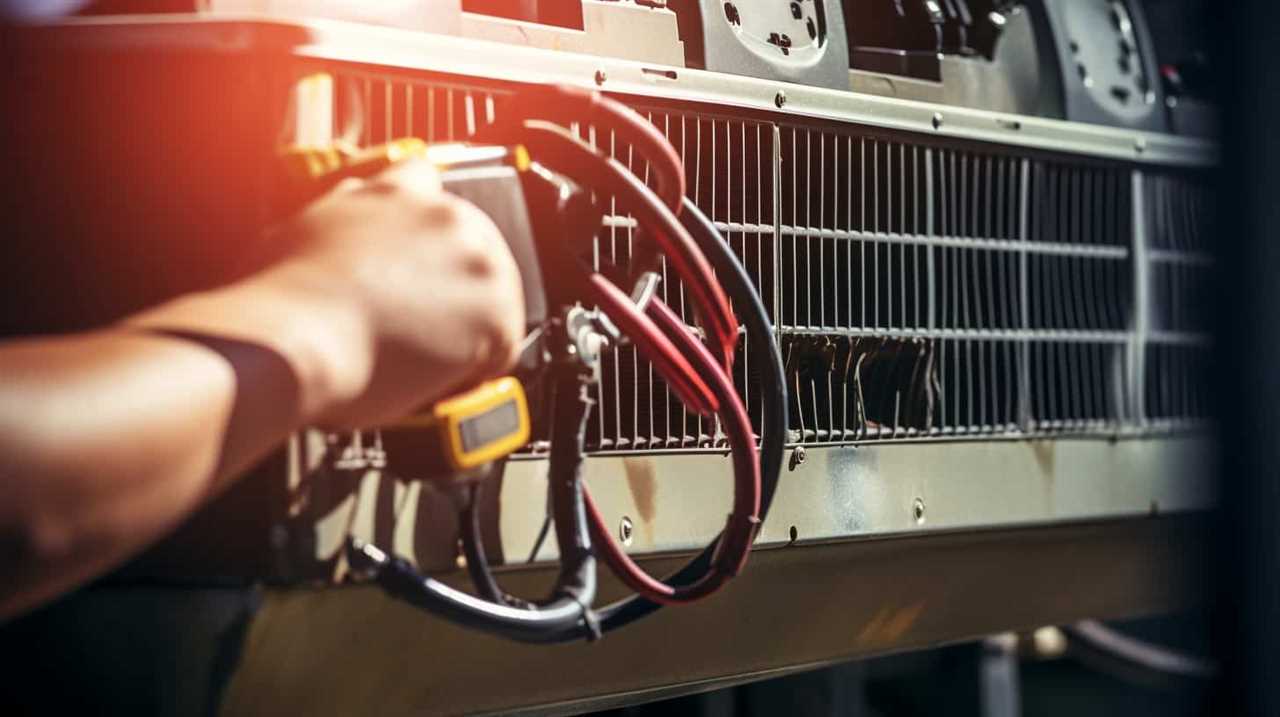
While these units may have a higher upfront cost compared to conventional models, they offer significant savings in terms of energy consumption over time. Energy-efficient heat pumps utilize advanced technologies to maximize heating and cooling efficiency, resulting in reduced energy usage and lower utility bills. By carefully comparing the initial cost with the estimated savings in energy consumption, homeowners can make an informed decision that aligns with their budget and environmental goals.
Understanding the cost and savings associated with energy-efficient heat pumps is essential for choosing the right option for our home. Transitioning into the subsequent section about compatibility and installation, we can now explore how to ensure that the chosen heat pump is compatible with our existing HVAC system.
Compatibility and Installation
One important factor to consider is the number of heat pumps that are compatible with our home’s existing HVAC system. When choosing the right heat pump for our home, we need to take into account the compatibility considerations and the installation process. Here are some key points to keep in mind:
- System Requirements: Determine the heating and cooling needs of our home and ensure that the heat pump we choose meets those requirements.
- Size and Capacity: Consider the size and capacity of the heat pump to ensure it can effectively heat or cool our home without overworking or underperforming.
- Energy Efficiency: Look for heat pumps with high energy efficiency ratings to reduce our energy consumption and lower our utility bills.
- Installation Requirements: Understand the installation process and any additional equipment or modifications that may be needed.
- Professional Assistance: Seek the help of a professional HVAC technician to assess our home’s compatibility, recommend the right heat pump, and ensure proper installation.
Sizing and Installation: Getting It Right
For optimal performance, it’s crucial to accurately determine the appropriate size and install the heat pump in our homes. Sizing the heat pump correctly ensures that it can effectively heat or cool our living spaces without wasting energy. It’s essential to consider factors such as the size of the rooms, insulation levels, and climate conditions when selecting the right size.

Installation challenges can arise due to the complexity of the system and the need for proper ventilation. A professional HVAC technician should handle the installation process to ensure that all components are properly connected and functioning. Proper ventilation is necessary to prevent issues like poor indoor air quality and moisture buildup.
Following manufacturer guidelines and seeking professional assistance will ensure that the heat pump is sized and installed correctly for optimal performance and energy efficiency.
Operating Your Heat Pump for Optimal Performance
When it comes to operating your heat pump for optimal performance, there are a few key points to keep in mind.
First, adjusting your temperature settings can greatly impact the efficiency of your heat pump. By setting your thermostat to a moderate temperature, you can reduce energy consumption without sacrificing comfort.

Second, regular maintenance is essential for ensuring the longevity of your heat pump. Regularly cleaning or replacing filters, checking for leaks, and scheduling professional inspections can help keep your system running smoothly.
Lastly, proper insulation is crucial for maximizing the efficiency of your heat pump. Well-insulated homes retain heat better, allowing your heat pump to work more effectively.
Temperature Settings for Efficiency
To maximize the performance of our heat pump, it’s important to carefully consider the temperature settings. By finding the right balance, we can optimize efficiency and minimize energy consumption. Here are some key points to keep in mind:
- Set the temperature to the lowest comfortable level in winter to save energy.
- Use programmable thermostats to adjust temperatures automatically based on your schedule.
- Avoid drastic temperature changes, as it can strain the heat pump and increase energy usage.
Consider zoning systems to control temperatures in different areas of your home independently. Regularly monitor and adjust your temperature settings to ensure optimal performance.
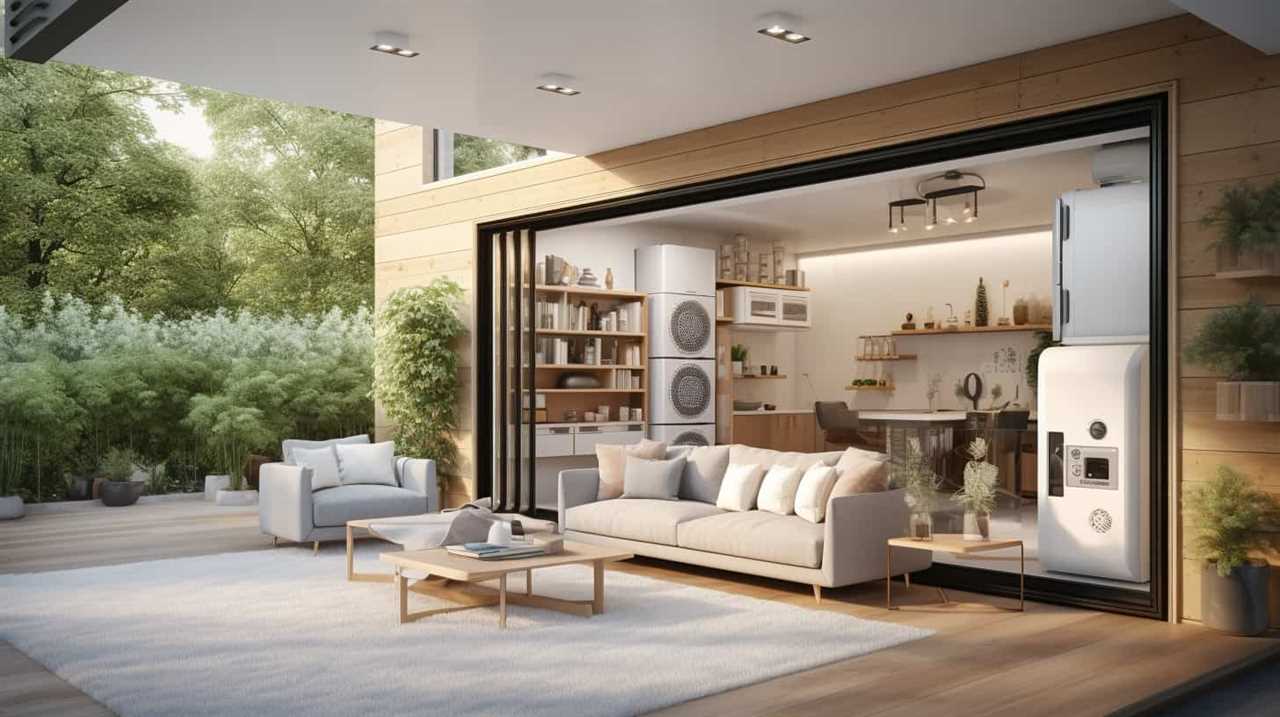
Regular Maintenance for Longevity
We can extend the lifespan of our heat pump and ensure optimal performance by performing regular maintenance tasks. By following a regular maintenance checklist, we can identify and address any issues before they escalate into major problems.
It’s important to inspect and clean the filters regularly to ensure proper airflow and prevent dust buildup. Additionally, checking the outdoor unit for debris and removing any obstructions will help maintain efficient operation. Monitoring the refrigerant levels and inspecting the electrical connections for signs of damage are also crucial maintenance tasks.
By regularly performing these maintenance tasks, we can prevent costly repairs and ensure that our heat pump operates at its best.
Now, let’s explore the benefits of proper insulation and how it can further improve the efficiency of our heat pump system.

Benefits of Proper Insulation
To ensure optimal performance of our heat pump, we need proper insulation. Proper insulation is crucial for reducing energy consumption and improving indoor air quality. Here are five key benefits of proper insulation:
Energy Efficiency: Proper insulation helps to prevent heat loss during winter and heat gain during summer, reducing the need for excessive heating or cooling.
Cost Savings: By reducing energy consumption, proper insulation can lead to significant cost savings on utility bills.
Comfort: Insulation helps to maintain a consistent indoor temperature, creating a more comfortable living environment.
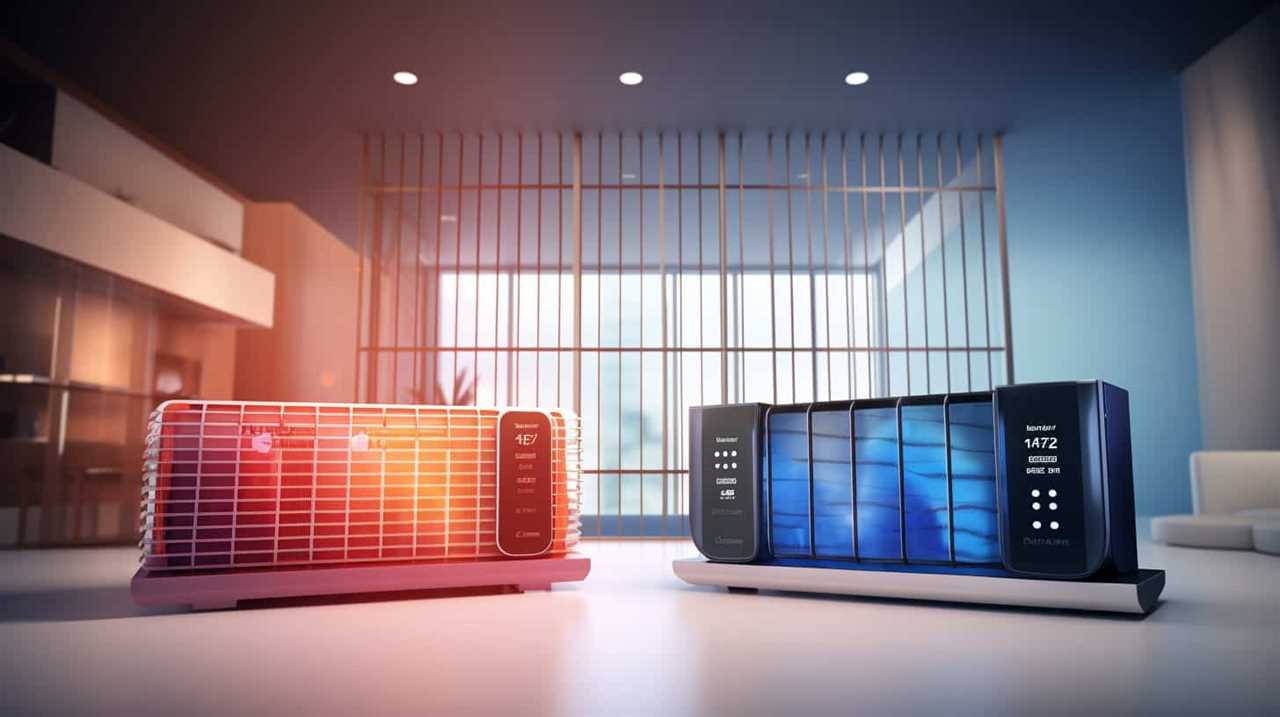
Noise Reduction: Insulation can also act as a sound barrier, reducing outside noise pollution and creating a quieter indoor space.
Environmental Impact: By reducing energy consumption, proper insulation contributes to a greener and more sustainable future.
Investing in proper insulation not only improves the performance of your heat pump but also benefits your wallet and the environment.
Setting Temperature and Humidity Levels
Our recommended temperature and humidity levels provide optimal comfort and energy efficiency. Controlling the indoor climate is essential for creating a pleasant and healthy environment.
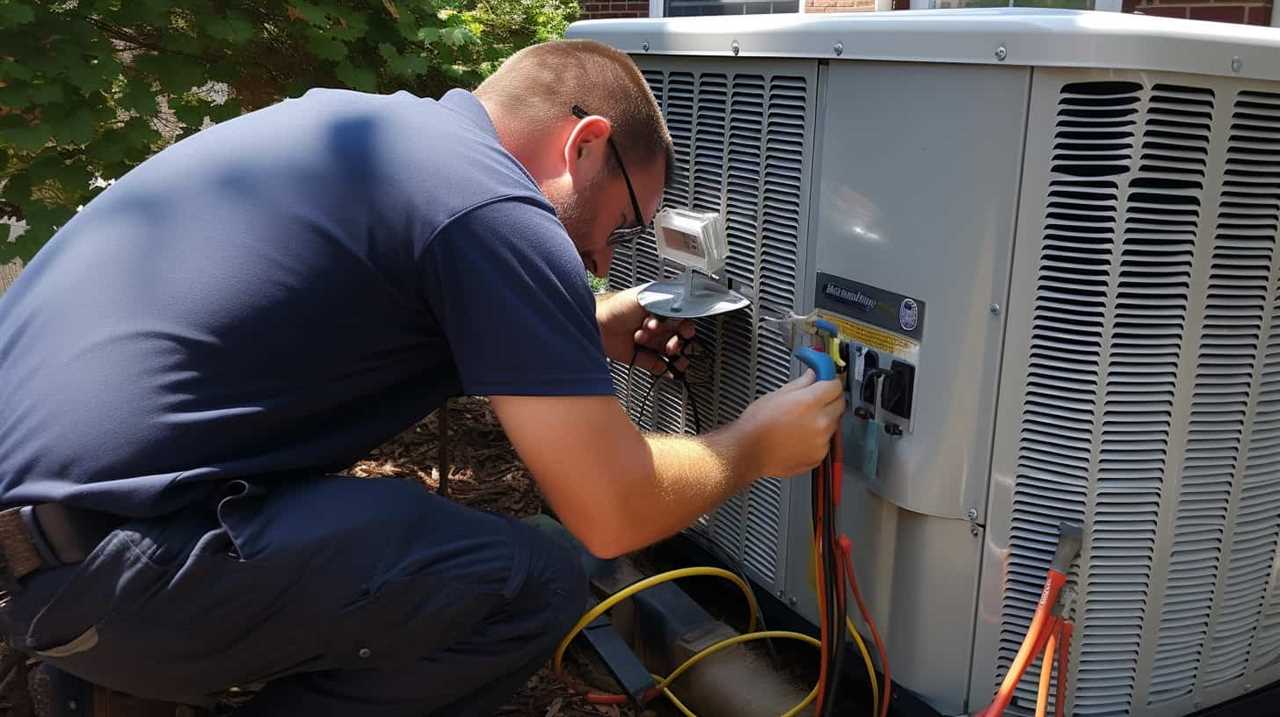
When it comes to temperature, we suggest setting it between 68 to 72 degrees Fahrenheit (20 to 22 degrees Celsius) during the winter and 74 to 78 degrees Fahrenheit (23 to 26 degrees Celsius) during the summer.
Maintaining proper humidity levels is equally important for managing indoor air quality. We recommend keeping the humidity between 40% to 60% to prevent mold growth and ensure respiratory comfort.
By following these guidelines, you can enjoy a comfortable living space while also saving energy.
Now, let’s move on to troubleshooting common heat pump issues.
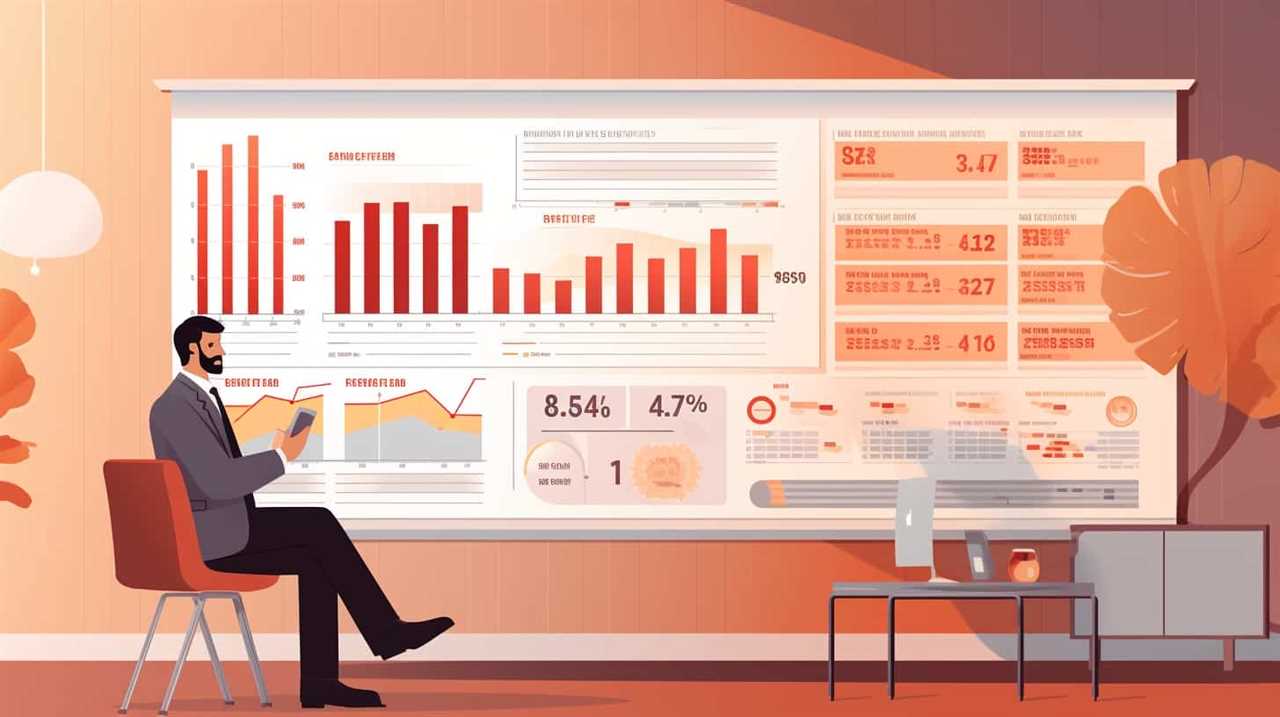
Troubleshooting Common Heat Pump Issues
If you encounter any issues with your heat pump, a common problem could be a malfunctioning thermostat. Troubleshooting common heat pump issues can help you identify and resolve problems efficiently.
Here are some common heat pump problems and troubleshooting techniques:
No heat or cooling: Check the thermostat settings and make sure it’s set to the desired temperature. Verify if the circuit breaker is tripped and reset it if necessary.
Inadequate airflow: Inspect the air filters and clean or replace them if they’re dirty or clogged. Ensure that the supply and return registers are open and unobstructed.
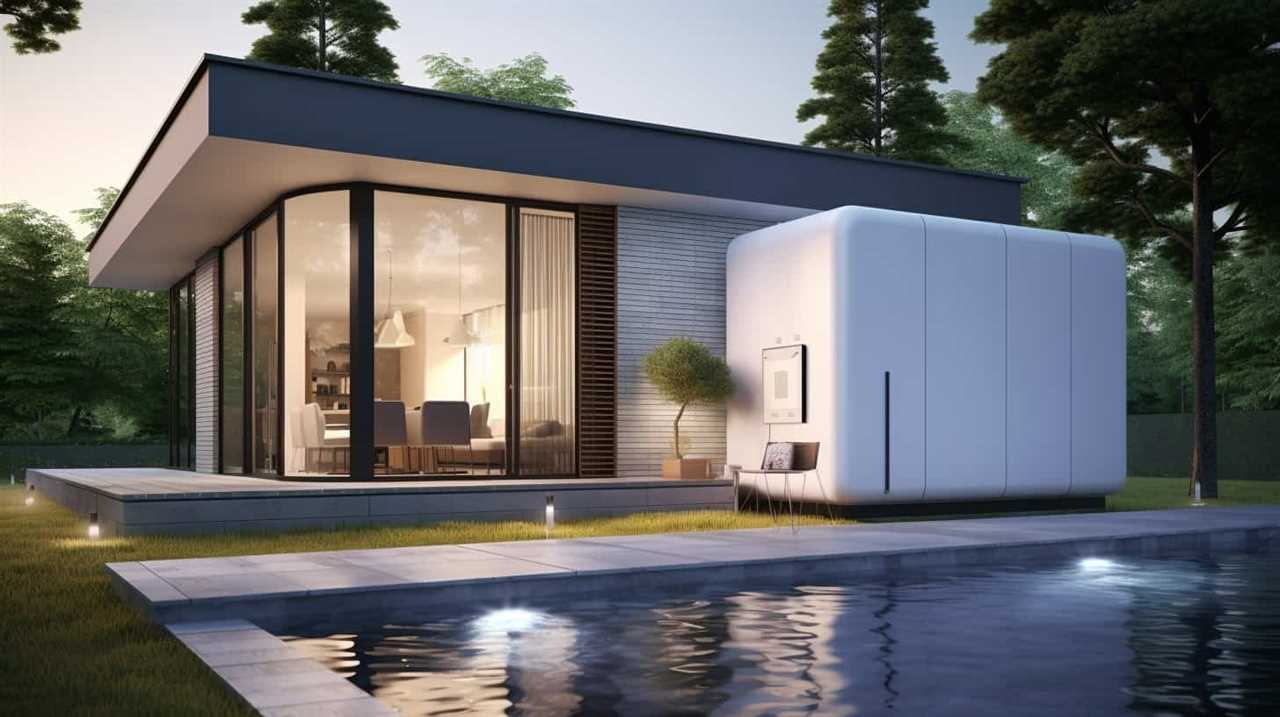
Strange noises: Listen for unusual sounds like grinding, squealing, or rattling. These could be signs of a faulty motor, loose parts, or debris in the system. Contact a professional for inspection and repairs.
Frozen outdoor unit: Check for ice buildup on the outdoor unit. This can be caused by dirty air filters, low refrigerant levels, or a malfunctioning defrost control. Clean or replace filters and consult with a technician if needed.
Inconsistent temperature: If the heat pump isn’t maintaining a consistent temperature, it may be due to a faulty thermostat, improper installation, or an issue with the heat pump’s components. Contact a professional to diagnose and resolve the problem.
Maintaining and Cleaning Your Heat Pump
We regularly recommend maintaining and cleaning our heat pump to ensure optimal performance and efficiency. Proper maintenance and cleaning are essential to prolong the lifespan of your heat pump and avoid any potential issues.

Here are some cleaning tips and a maintenance checklist to help you keep your heat pump in top condition:
- Clean or replace air filters regularly to ensure proper airflow and prevent dust buildup.
- Clear any debris, leaves, or obstructions from the outdoor unit.
- Inspect the indoor and outdoor coils for dirt or debris and clean them if necessary.
- Check the condensate drain line for clogs and clean it if needed.
- Lubricate the fan motor and other moving parts to reduce friction and improve efficiency.
- Schedule annual professional maintenance to check for any potential issues and ensure optimal performance.
By following these cleaning tips and maintenance checklist, you can ensure that your heat pump operates efficiently and reliably, providing you with the desired comfort in your home.
Now, let’s move on to the next section and explore how to maximize energy efficiency with heat pumps.
Maximizing Energy Efficiency With Heat Pumps
To maximize energy efficiency with heat pumps, we can implement various strategies. Here are some energy saving tips and climate control techniques to help you get the most out of your heat pump:
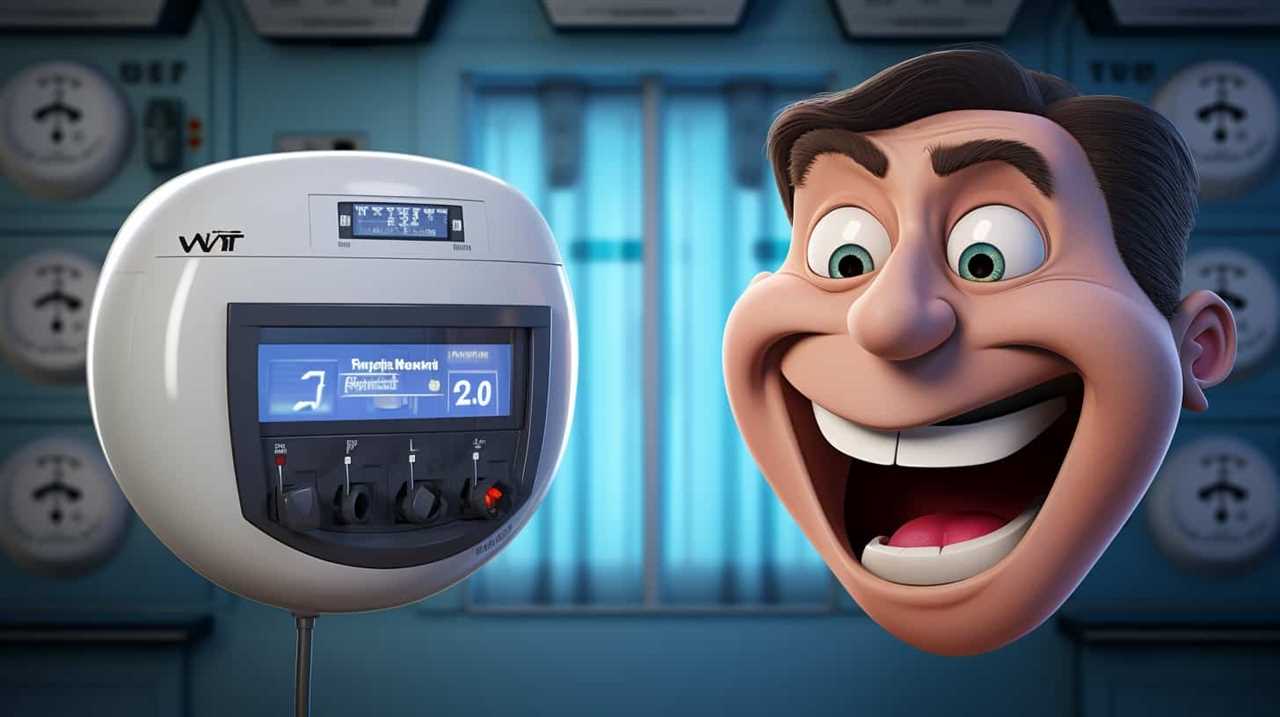
- Regularly clean and maintain your heat pump to ensure optimal performance and efficiency.
- Install a programmable thermostat to control the temperature settings and reduce energy consumption when you’re not at home.
- Use insulation to prevent heat loss and maintain a stable indoor temperature.
- Seal any air leaks in your home to prevent drafts and maintain a consistent climate.
- Consider using a dual fuel system, which combines a heat pump with a furnace, to maximize efficiency in extreme temperatures.
Integrating Heat Pumps With Other Climate Control Systems
We can optimize the performance of heat pumps by integrating them with other climate control systems, such as thermostats and ventilation systems. Integrating heat pumps with smart home technology allows for more precise control of temperature settings and scheduling. By connecting your heat pump to a smart thermostat, you can remotely adjust the temperature and create custom heating and cooling schedules based on your daily routine. This not only maximizes comfort but also minimizes energy waste by ensuring that the heat pump operates only when needed.
Additionally, integrating heat pumps with ventilation systems can improve indoor air quality by efficiently circulating fresh air throughout the home. By optimizing heat pump performance through integration with other climate control systems, homeowners can achieve greater energy efficiency and overall comfort.
In addition to optimizing performance, integrating heat pumps with other climate control systems also leads to long-term savings and a reduced environmental impact.
Long-Term Savings and Environmental Impact
By utilizing energy-efficient heat pumps, homeowners can achieve long-term savings on their utility bills and reduce their environmental impact. Here are some key benefits of using heat pumps for climate control:
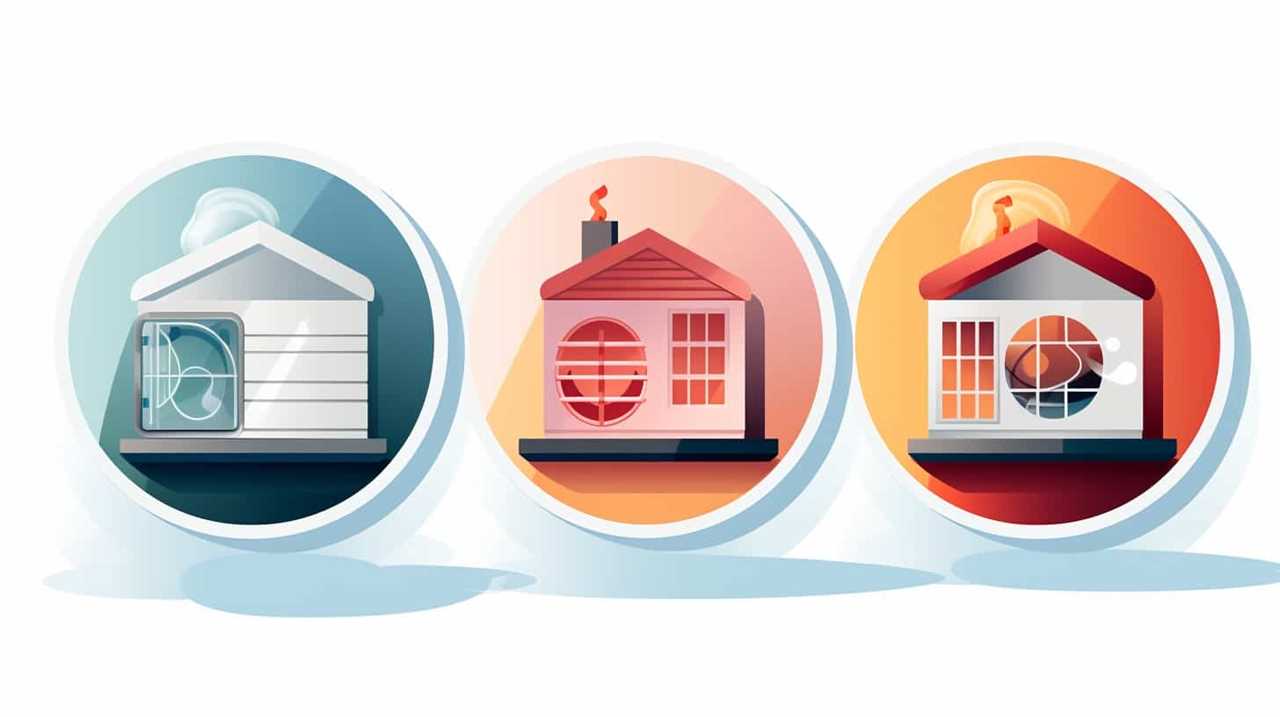
Long-term cost savings: Energy-efficient heat pumps can significantly lower your heating and cooling costs over time. By utilizing renewable energy sources like air, water, or ground heat, heat pumps can provide efficient heating and cooling throughout the year, resulting in substantial savings on your utility bills.
Reduced environmental impact: Heat pumps use renewable energy sources, such as the heat in the air or ground, to provide heating and cooling. This reduces reliance on fossil fuels and decreases greenhouse gas emissions, helping to combat climate change and protect the environment.
Increased energy efficiency: Heat pumps are highly efficient, converting a small amount of energy into a large amount of heat. This means they require less energy to operate, resulting in lower energy consumption and reduced environmental impact.
Long lifespan: Heat pumps are built to last, with an average lifespan of 15 to 20 years. This longevity ensures long-term cost savings by minimizing the need for frequent replacements.

Government incentives: Many governments offer incentives and rebates for installing energy-efficient heat pumps, further reducing the upfront costs and maximizing long-term savings.
Frequently Asked Questions
Can Heat Pumps Be Used in Commercial or Industrial Settings?
Yes, heat pumps can be used in commercial or industrial settings. The heat pump installation process is straightforward, and the benefits of using heat pumps in commercial buildings include energy efficiency, cost savings, and environmental sustainability.
Are There Any Government Incentives or Rebates Available for Installing Energy-Efficient Heat Pumps?
Yes, there are government incentives and rebates available for installing energy-efficient heat pumps. These incentives can help offset the initial cost and encourage energy savings in commercial and industrial settings.
How Often Should a Heat Pump Be Serviced or Maintained?
We should regularly service and maintain our heat pump to ensure its optimal performance. A heat pump maintenance checklist includes cleaning or replacing filters, checking electrical connections, and inspecting for signs of malfunction.

Can a Heat Pump Be Used as the Sole Source of Heating and Cooling in a Home?
Yes, a heat pump can be used as the sole source of heating and cooling in a home. It offers numerous benefits such as energy efficiency, lower utility bills, and consistent temperature control.
Is It Possible to Retrofit an Existing HVAC System With a Heat Pump?
Yes, it is possible to retrofit an existing HVAC system with a heat pump. Retrofitting HVAC systems with heat pumps offers numerous benefits, such as improved energy efficiency and reduced carbon emissions.
What Are the Benefits of Using Energy-Efficient Heat Pumps for Climate Control?
Using energy-efficient heat pumps for climate control offers numerous benefits. These advanced systems provide effective heating and cooling while consuming less energy, resulting in reduced utility bills. They are environmentally friendly, as they produce fewer greenhouse gas emissions, contributing to a sustainable future. Energy-efficient heat pumps also enhance indoor air quality by providing proper ventilation and dehumidification, ensuring a comfortable and healthy living environment.
Conclusion
In conclusion, embracing the power of energy-efficient heat pumps is like unleashing a climate-controlling superhero in your home.
These incredible machines not only provide optimal comfort, but also save you heaps of money on energy bills while minimizing your environmental impact.

With the right heat pump, proper sizing and installation, and diligent maintenance, you can maximize its efficiency and seamlessly integrate it with other climate control systems.
Get ready to experience a new level of comfort and savings with the mighty heat pump!

